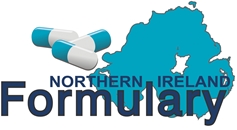Prescribing Notes
- Prescribe as per NICE NG28 recommendations. See also NICE visual summary for blood glucose lowering therapy in adults with type 2 diabetes. Differences in licensed indications between the SGLT-2 inhibitors should be considered when selecting an appropriate drug.
- For information on using SGLT-2 inhibitors for people with type 2 diabetes and CKD refer to NICE NG28.
- Glycaemic lowering efficacy of SGLT-2 inhibitors is dependent on renal function and is reduced in patients who have moderate renal impairment and likely absent in patients with severe renal impairment. For specific advice on the use in renal impairment, please refer to BNF for Canagliflozin and Empagliflozin and to the SPC for Dapagliflozin.
- Counsel patients on the signs and symptoms of DKA and advise them to seek immediate medical advice if they develop any of these.
- Counsel patients on ‘sick day rules’ with SGLT-2 inhibitors.
Non-diabetes indications
- Heart Failure- treatment with dapagliflozin or empagliflozin are usually started on the advice of a heart failure specialist for details see associated TAs below:
- Dapagliflozin and empagliflozin are accepted for use as options for treating symptomatic chronic heart failure with reduced ejection fraction in adults, only if used as an add-on to optimised standard care. For further information see NICE TA679 and NICE TA773.
- Dapagliflozin and empagliflozin are accepted for use as an option for treating symptomatic chronic heart failure with preserved or mildly reduced ejection fraction in adults. For further information see NICE TA902 and NICE TA929
- CKD
- Dapagliflozin and empagliflozin are accepted for use as an option for treating CKD in adults, only if used as an add- on to optimised standard care as specified in NICE TA1075 and NICE TA942.
Cautions
- Glycosuria, osmotic symptoms and a slightly higher rate of problems due to volume depletion effects (dehydration, hypovolaemia and hypotension) are seen with SGLT-2 inhibitors. Use with caution in those on loop diuretics and frail/elderly patients.
- Serious cases of DKA have been reported in patients taking a SGLT-2 inhibitor. A number of factors may predispose patients to DKA e.g. a history of pancreatitis, alcohol abuse, conditions leading to restricted food intake or severe dehydration see MHRA for full details. Address modifiable risks for DKA before starting an SGLT-2 inhibitor. For example, people who are following a very low carbohydrate or ketogenic diet may need to delay treatment until they have changed their diet.
- SGLT-2 inhibitors should be interrupted in patients who are hospitalised for major surgical procedures or acute serious medical illnesses and ketone levels measured – refer to MHRA.
- SGLT-2 inhibitors should be permanently discontinued post DKA unless another clear precipitating factor is identified and resolved (specialist decision).
- SGLT-2 inhibitors should not be prescribed in type 1 diabetes.
- Canagliflozin may increase the risk of lower-limb amputation (mainly toes) in patients with type 2 diabetes. Evidence does not show an increased risk for dapagliflozin and empagliflozin, but the risk may be a class effect. Preventive foot care is important for all patients with diabetes. See MHRA advice for healthcare professionals.
- There have been reports of Fournier’s gangrene (necrotising fasciitis of the genitalia or perineum) with SGLT-2 inhibitors. If Fournier’s gangrene is suspected, stop the SGLT-2 inhibitor and start treatment urgently (including antibiotics and surgical debridement). Fournier’s gangrene is a rare but potentially life-threatening infection that requires urgent medical attention. See MHRA for further details.
